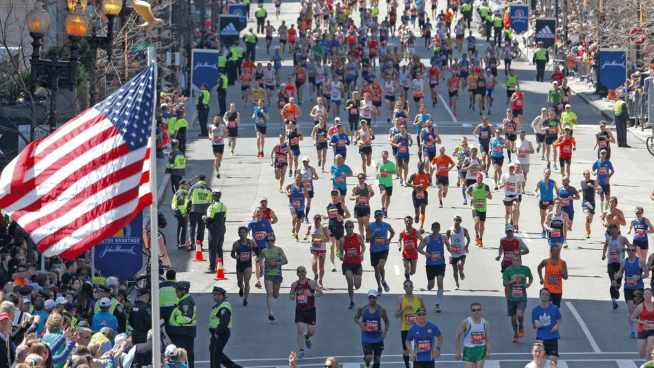Hurdle Mobility Circuit
Heard of hurdle mobility as a form of stretching? [Pause] No? Well, you’re missing out on the warm-up word circulating around college and professional training facilities. Those dusty hurdles stacked in the corner of the weight room are no longer reserved for tracksters. More and more collegiate and professional athletes—representing every sport—check them out to get a thorough lower-body stretch before a strenuous workout.
“[Hurdle warm-ups] strengthen our hips, our abductors [and] adductors, and increase mobility in them,” says Eric Lichter, Ohio State’s football strength and conditioning coach. Lichter represents most coaches’ perspective on hurdle mobility by stating, “[Hurdles] are one of the best things to warm up the hips and get the body ready for work, because they deal with rotation of the hips and loosen up some back musculatures.”
Below, STACK compiles the ultimate hurdle mobility circuit for every athlete—extinguishing the excuse that “you were never told.”
Hurdle Mobility Circuit
Perform twice, making sure to repeat any directional drill to the opposite side.
Setup: Line up six to 10 hurdles back-to-back, and high enough so that walking over them is a challenge but not a struggle.
• Walk over hurdles; lead leg, then trail leg
• Walk backwards over all hurdles
• Walk forward over two hurdles, then step backward over one. Repeat pattern
• Step over first hurdle; step under next. Repeat pattern
• Step forward over first hurdle; slowly pivot right 180 degrees and step over next. Repeat pattern
• Face left so hurdles are to your right; walk laterally over hurdles
• Turn left 90 degrees; step laterally over first hurdle; pivot 180 degrees and step over next. Repeat pattern
Adaptation: Perform drill holding medicine ball overhead or with hands locked together behind head
Coaching Points: Make sure you can feel each exercise in your legs // Keep your head and arms still throughout the drill // Avoid extraneous movements // Concentrate on maintaining proper posture // Movements should be fluid // Use sound squat technique when ducking under a hurdle // Adjust hurdles accordingly if working with teammates of different heights
Benefits: Increases rotational balance and agility, develops hip fluidity, promotes coordination, and strengthens core and lower body
RECOMMENDED FOR YOU
MOST POPULAR
Hurdle Mobility Circuit
Heard of hurdle mobility as a form of stretching? [Pause] No? Well, you’re missing out on the warm-up word circulating around college and professional training facilities. Those dusty hurdles stacked in the corner of the weight room are no longer reserved for tracksters. More and more collegiate and professional athletes—representing every sport—check them out to get a thorough lower-body stretch before a strenuous workout.
“[Hurdle warm-ups] strengthen our hips, our abductors [and] adductors, and increase mobility in them,” says Eric Lichter, Ohio State’s football strength and conditioning coach. Lichter represents most coaches’ perspective on hurdle mobility by stating, “[Hurdles] are one of the best things to warm up the hips and get the body ready for work, because they deal with rotation of the hips and loosen up some back musculatures.”
Below, STACK compiles the ultimate hurdle mobility circuit for every athlete—extinguishing the excuse that “you were never told.”
Hurdle Mobility Circuit
Perform twice, making sure to repeat any directional drill to the opposite side.
Setup: Line up six to 10 hurdles back-to-back, and high enough so that walking over them is a challenge but not a struggle.
• Walk over hurdles; lead leg, then trail leg
• Walk backwards over all hurdles
• Walk forward over two hurdles, then step backward over one. Repeat pattern
• Step over first hurdle; step under next. Repeat pattern
• Step forward over first hurdle; slowly pivot right 180 degrees and step over next. Repeat pattern
• Face left so hurdles are to your right; walk laterally over hurdles
• Turn left 90 degrees; step laterally over first hurdle; pivot 180 degrees and step over next. Repeat pattern
Adaptation: Perform drill holding medicine ball overhead or with hands locked together behind head
Coaching Points: Make sure you can feel each exercise in your legs // Keep your head and arms still throughout the drill // Avoid extraneous movements // Concentrate on maintaining proper posture // Movements should be fluid // Use sound squat technique when ducking under a hurdle // Adjust hurdles accordingly if working with teammates of different heights
Benefits: Increases rotational balance and agility, develops hip fluidity, promotes coordination, and strengthens core and lower body











